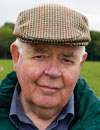David Richardson: Farm life in Chile after the quake

On the night of the Chilean earthquake the Farmers Weekly party studying South American farming was at a hotel in the Argentinean town of Bariloche.
It’s a beautiful area of lakes, mountains and hill farms. It sits in the eastern foothills of the Andes.
As my wife and I lay asleep, the window rattled and woke us. “What’s that noise?” she asked. “The window is open,” I replied, “I expect it’s the wind.”
The digital alarm clock on the bedside table said it was 3.35am so I turned over and went back to sleep.
Next morning on CNN, the only English-speaking news channel available on the TV, I saw what had really caused the window to rattle. As news of the natural disaster unfolded it was clearly possible our planned visit to look at Chilean farming 24 hours later might be aborted.
All day we deliberated whether it would be safe to complete our tour; whether it would be possible given the reported damage to roads, bridges and airports; whether it would be appropriate to try, given that the country would be concentrating on rescuing its injured and burying its dead.
Then emails and texts began to arrive. “Please continue your journey,” said our Chilean hosts. “We are waiting for you.
“Your itinerary is almost all secure and most of that which cannot yet be confirmed should be fine by the time you arrive.”
The epicentre of the quake, it was pointed out, was in the Pacific off Concepcion, around 700km (440 miles) north of where we were scheduled to cross into Chile and more than 300km from any places we were planning to visit.
Suffice to say with mixed feelings we carried on and found that, in the main, the confidence of our guide was justified. When we later saw evidence of damage to buildings and roads we were impressed by the resilience and determination of the Chilean people to repair them as soon as possible.
At Santiago Airport, for instance, where the terminal building was damaged, check-in was in hastily erected marquees in the car park. And we travelled over a few bridges where cracks in the structures had been temporarily covered with thick metal plates to enable vehicles to pass.
For the record, the party took a collection to try to help in a small way and the result was channelled through a local Rotary Club to provide specific assistance to victims of the tsunami along the coast.
As indicated we did not travel close to the epicentre so I cannot comment on the quake’s effect on nearby farms, although I imagine problems were severe. But dairy farms 300km or more from that point had suffered electrical failure.
There had been no power for three or four days and, in one case, a stand-by generator had also been damaged meaning cows could not be milked for a day. This had led to mastitis – the ramifications of which were still being dealt with many days later. On another farm, milk was being spread on the land because the tanker could not get there to collect.
A key fuel refinery had been damaged and led to supply worries as arable farmers tried to complete their grain harvest. Some vineyards lost large amounts of wine as vats split as well as infrastructure damage.
Yes, there was lasting destruction that caused hardship and bereavement to many. But after one of the biggest earthquakes ever recorded, a week later Chile was well on the way to being back to normal.
